Ancient settlements
of Chui Valley
Medieval Sites in the Chui Valley, Kyrgyzstan
It is not well known, but Chui valley was one of the most urbanized regions of North Kyrgyzstan in the middle ages. According to the Arab-Persian sources, there is a statement about settlements and towns of the Chuy valley as well as routes that linked them. Although, the information on the subject is limited, accurate data is provided about three medieval cities in the eastern part of the valley and they are called Suyab, Nevaket, and Balasagun. All the sites are easily visited from Bishkek but they are not well excavated or established except for Burana tower where you can find a lot of information and also a small museum. The other sites are free to be roamed by anyone and one can easily imagine how large cities they have been at their time from the vast size of walls and the remains of buildings and forts still visible.
According to a statement presented to UNESCO, the Upper Chui Valley Silk Road Sites, the ancient cities of Navekat, Suyab, and Balasagyn are located along the major branch of the Silk Road, which was operating in the early and late Middle Ages (6th century AD – beginning of 8th century AD) and served the sub-regions of Semirechie, Issyk Kul, and Southern Kazakhstan.
Suyab and Nevaket were, at different times, political centers of the western Turkic and Turkish Kaganates, while Balasagun was a major town of the Karakhanide state and entire Central Asia. Navekat (today Krasnaya Rechka) was one of the main towns of the Chuy valley together with Suyab (Ak Beshim) and Balasagyn (Burana). Later, medieval sites in the Chui valley expanded significantly and became unique centers of interdependence between Indian, Chinese, Sogdian and Turkic cultures. They were also a connective link between these civilizations thanks to their positions on the Northern Silk Road. People from India, Sogd, Syria, Persia, China, and the Northern Steppes settled in the nearby towns, each bringing their own religious and cultural traditions with them.
Navekat (Krasnorechenskoe)
(Krasnaya Rechka)
Nakvekat (“New city”) is what is remaining of an ancient city of that was one of the cities on the Great Silk Road flourishing in the 6th-12th centuries AD along the Northern branch of silk road. The settlement lies just 38 km east of Bishkek and is nominated by Kyrgyzstan to the UNESCO World Natural and Cultural Heritage List. The city was founded in the 6th century and it was a large trade and cultural center of the ancient Turkic Khaganate.
Archaeologists have revealed sections of a ceramic water supply system that supplied water from the main canal to the houses of wealthy citizens, as well as purification wells.
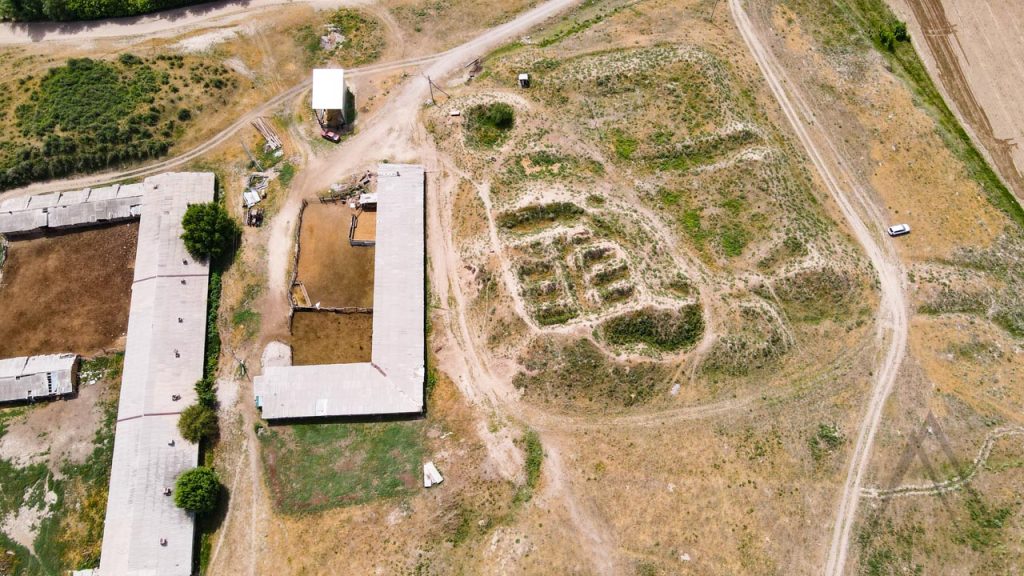

During the excavations, fragments of Buddhist paintings and sculptures were found together with a huge statue of Buddha, with the size of over 12 meters. It was made of cast clay with finely worked drapery and color painting. The buddha has been displayed in the historical museum of Bishkek which has unfortunately been closed for years.
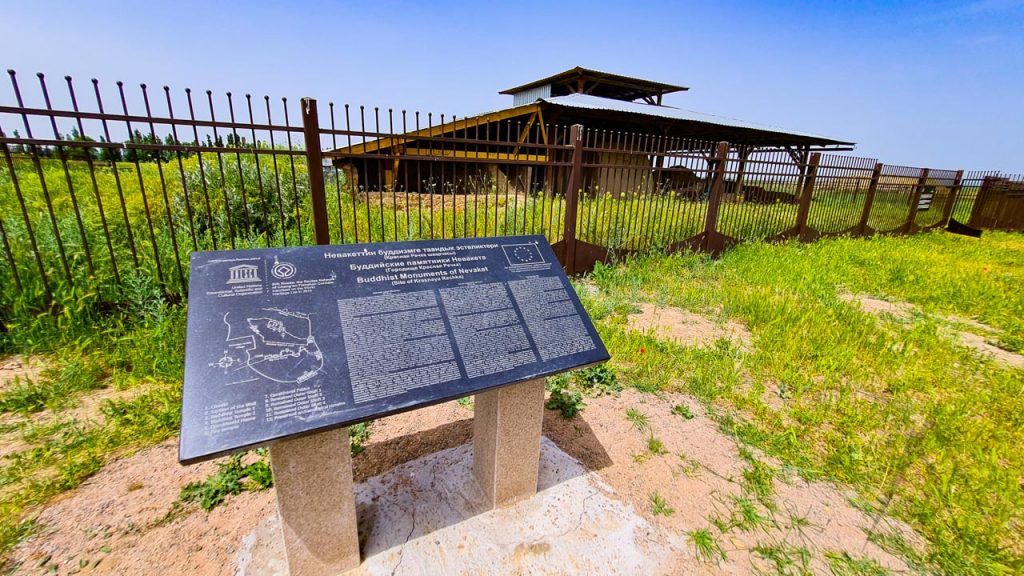
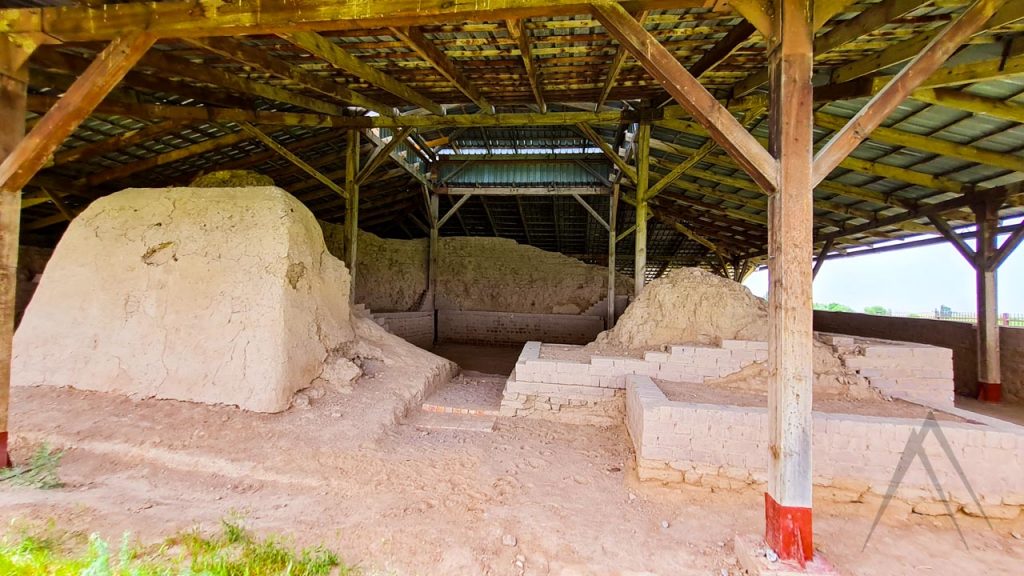
Krasnorechenskoe settlement is the first archaelogical object on the territory of Kyrgyzstan, which has been studied by modern science. The findings have included Buddhist temples, Zoroastrian burials, Christian pectoral crosses as well as production workshops, wine presses, individual household items, weapons, horse harness, jewelry and coins. Nowadays the place is an open area free to be roamed by anyone with pieces of pottery easily found all around the place.
Suyab (Ak Beshim)
Suyab medieval town is located at the current Ak-Bashim site, south of the Chui River and west of the present-day city of Tokmok, 50 km to the east of Bishkek. According to Chinese and Arab-Persian sources, the town is known as the well-known Suyab Town.

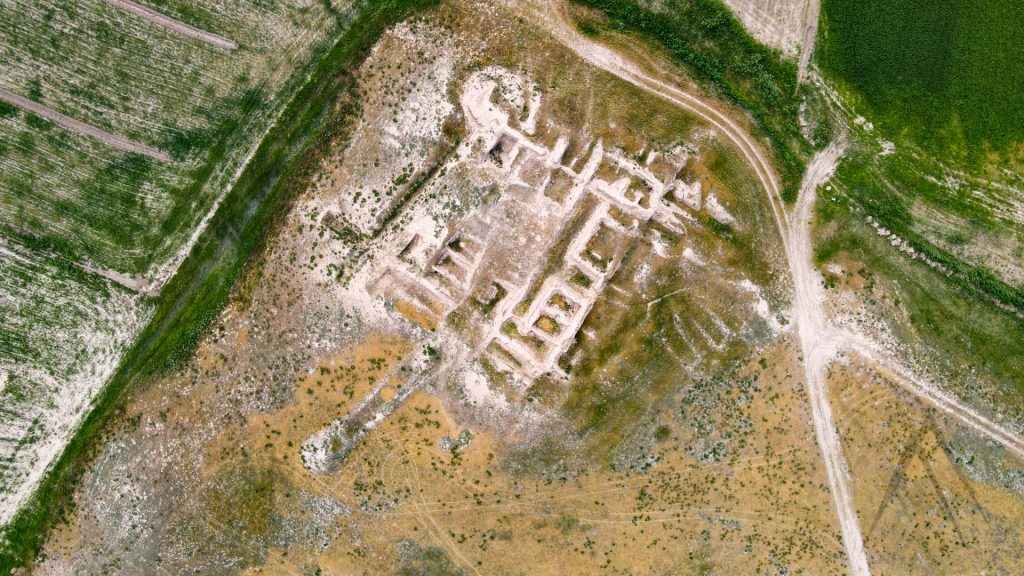
Suyab was founded in the 6th century AD. For Turkish people, Suyab was known as Ordu. Between the 7th and 10th century Suyab was the capital of the Western Turks, the Turgash, and the Qarluks. In the early 629 AD, Syab is also mentioned in Chinese sources as a major administrative and trading center. In the 8th century, the city housed a garrison from Tang China. The Qarakhanids moved their capital to Balasgyn in the 10th century and the city continued to function until the late 11th century.
Suyab consists of three areas: a citadel, two fortified inner cities (shakhristan) and a large suburb (rabat) surrounded by two ring-shaped walls. Suyab was a significant point on the Silk Road.

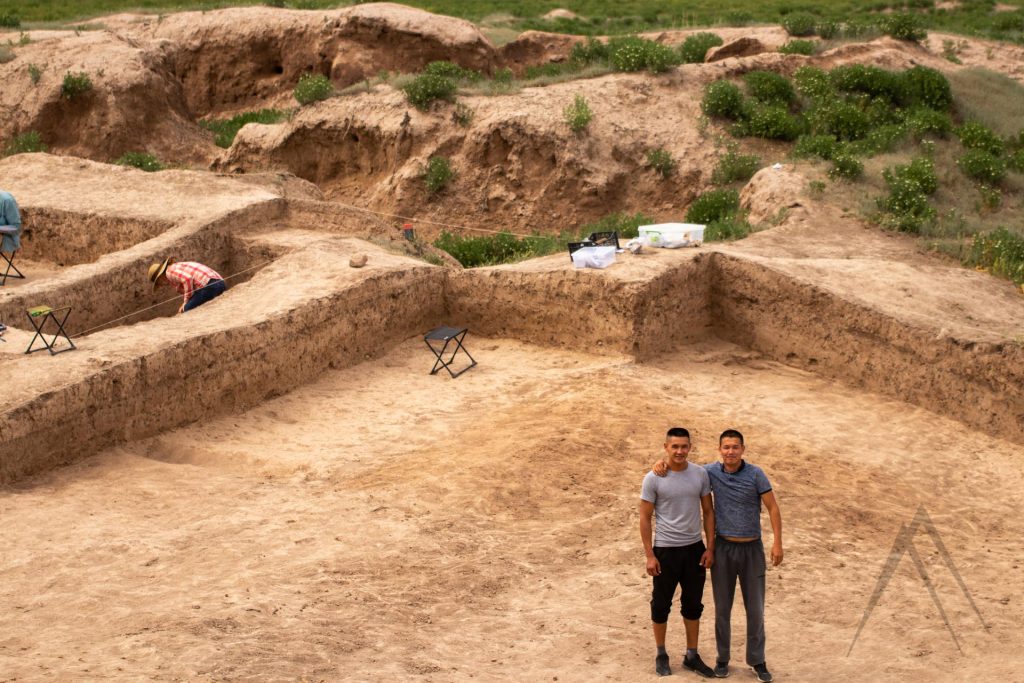
Suyab Discoveries
In 1953-54 archaeologist L.R. Kizlasov excavated several structures. Of these structures, almost nothing is left above ground. Two of these excavated structures were Buddhist Temple 1, situated 200 m south-southwest of the citadel and a second Buddhist temple 400 m east of the first one and a castle.
The Christian Church with the necropolis of 8th centuries AD was excavated in the east of Shakhristan. It is one of the most ancient Christian constructions in Central Asia.
Chinese Poet born in Suyab
According to one source, the famous Chinese poet Li Bai, whose poems are now considered world classic along with Shakespeare and Dante, was born in Suyab.
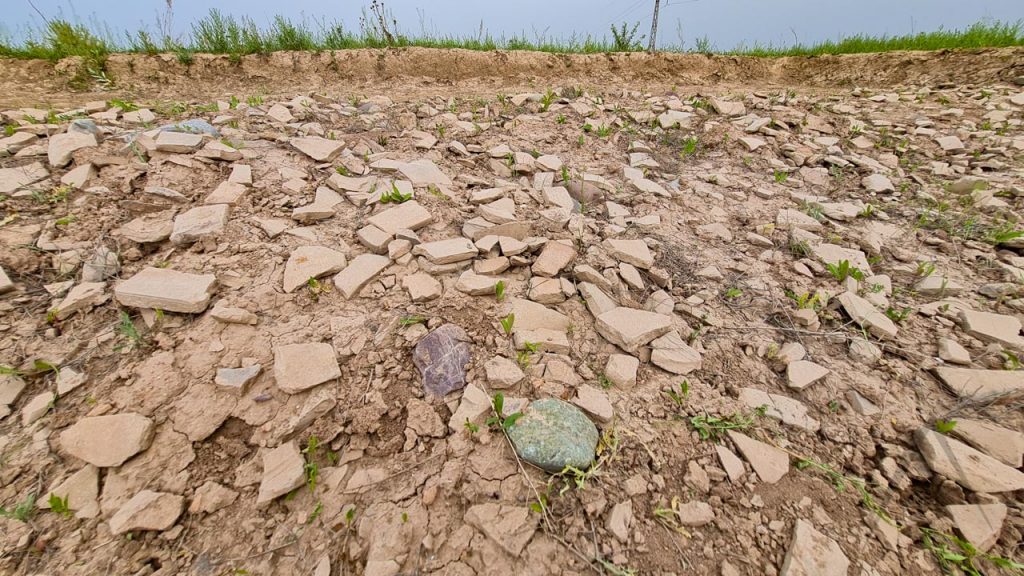

Balasagun (Burana)
Balasagun (or Balasagyn) was one of the vast medieval cities in Chui valley. Now the site is more commonly known as Burana and is mostly known by its old minaret tower. Balasagun was founded in the 10th century AD at the site of an older settlement. Along with Kashgar, Balasagun was one of the capitals of the Eastern Khanate after the Karakhanid state divided. Balasagun was an important stop on the Silk Roads and a place of intercultural exchange there lived followers of Islam, Syra-Nestorianism, and Buddism.
Balasagyn old town is situated about 12 kilometers southeast of Tokmok near the Kyrgyzstan-Kazakhstan border. It was an ancient city founded by Sogdians, a people of Iranian origin in the early centuries A.D and remained in their hands until the 11th century. As it was conveniently located between Chuy Valley, Pishpek (Bishkek) and Issyk-Kul Lake, it was the capital of the Kara-Khanid Khanate from the 10th century until it was captured by the Kara-Khitan Khanate in 1134. Balasagun was then seized and mostly destroyed by the Mongols in 1218. It was called Gobalik (a pretty city) in the 13th century and finally lost its importance and disappeared by the 15th century AD.


From 1920 to 1970 in Balasagun was a major archaeological site. The town had a complex layout covering about 25-30 square kilometers. There are ruins of a central fortress (still visible), some handicraft shops, bazaars, four religious buildings, domestic dwellings, a bathhouse, a plot of arable land, and a water delivery system (pipes delivering water from a nearby canyon). The city was protected by circles of walls and the inner ones can still be seen nearby the Burana tower.
Although the Karakhanids practiced Islam, they were tolerant of other religions and there are many examples of early Christian (Nestorian) inscriptions. Some Nestorian gravestones can be seen in Burana museum and in the Kyrgyz state historical museum.
Prominent people born in Balasagun
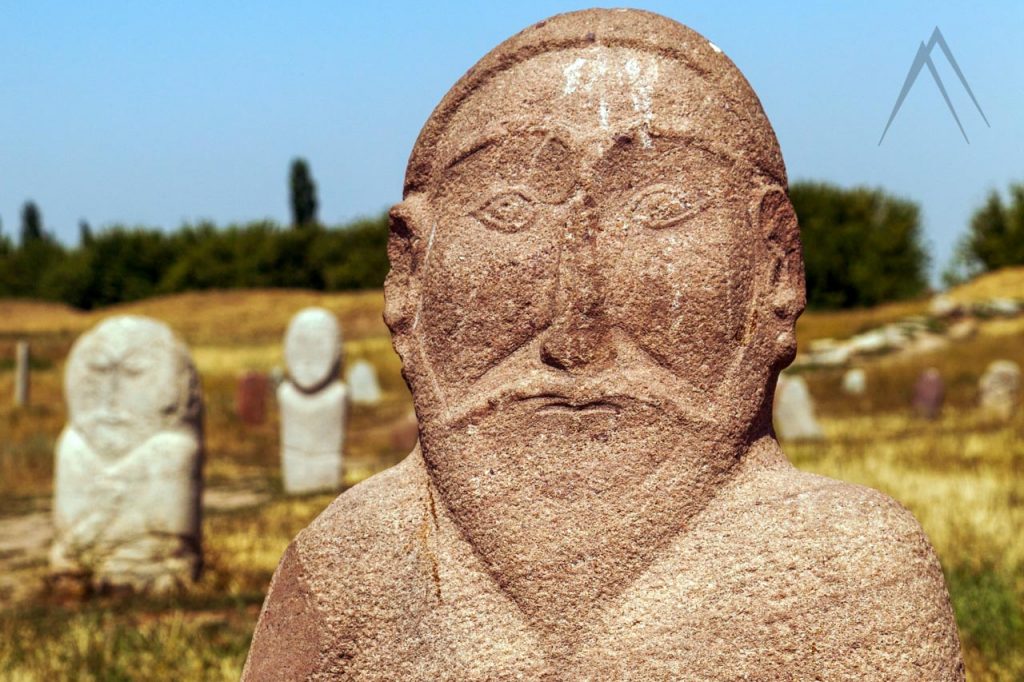
The medieval town of Balasagun was the capital of the western wing of the Karakhanid Empire for a long time. It was a cultural, academic, and spiritual center in the enormous territory of the Eurasian continent.
Notable figures such as Iusup Balasaguni, Mahmud Kashgari and others lived and worked here. The legendary medieval poet Yusuf Balasaguni wrote his encyclopedic work “Kutadgu Bilik” (“The Book of Moral Edification,” as well as home to the author of the poem Kudatgu Bilig (Beneficial Knowledge).
Tours including Kyrgyz Medieval cities
Most of Kyrgyzstan tours include Burana (Balasagun) as it is conveniently on the way to Issyk Kul and Naryn. Don’t hesitate to contact us if you want to organize a private tour to other Kyrgyz medieval city ruins.
Other sights in Chui Valley
Page updated 29.7.2021
